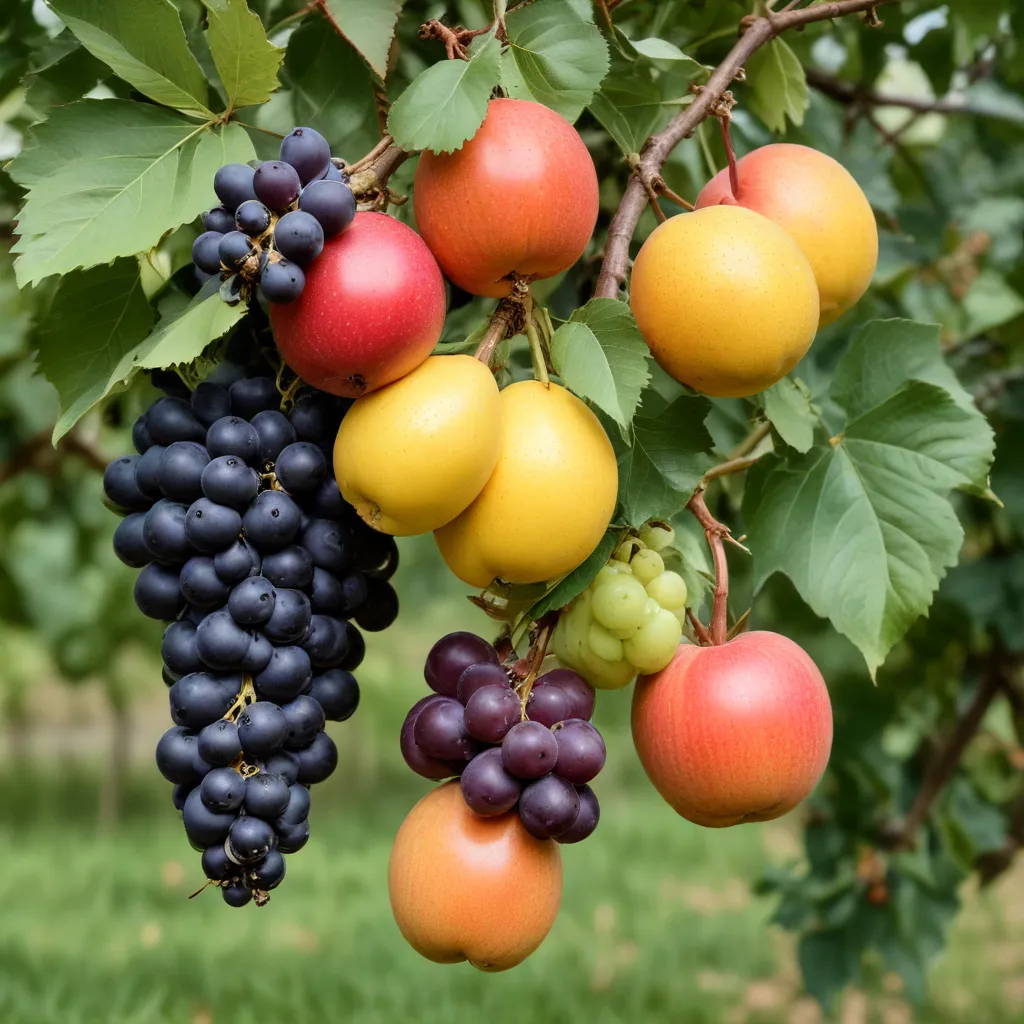
In the bounty of the garden, heirloom fruits stand out as beacons of flavor, beckoning us to slow down and savor their unique profiles. These heritage varieties, passed down through generations, offer a taste of the past that can elevate any culinary experience. As wine enthusiasts and avid home gardeners at the Wine Garden Inn, we’ve found that pairing these flavorful heirlooms with carefully selected wines creates a symphony of complementary notes, elevating both the produce and the pour.
Flavor Profiles of Heirloom Fruits
Heirloom tomatoes, for instance, are renowned for their robust, almost umami-like flavors that can range from sweet to tart, with undertones of spice or earthiness. The deep purple-red ‘Paul Robeson’ variety, named after the legendary singer and civil rights activist, offers a complex taste profile with hints of red wine and warm spices. The ‘Pink Beauty’ heirloom, with its firm, juicy flesh and balanced acidity, is a delightful canvas for showcasing the nuances of a crisp, minerally white wine.
Beyond tomatoes, heirloom watermelons and cantaloupes can be true revelations, with flavors that often surpass their modern hybrid counterparts. The ‘Moon and Stars’ watermelon, for example, boasts a deep, almost honey-like sweetness that pairs beautifully with the delicate floral notes of a well-structured rosé. Similarly, the richly aromatic ‘Charentais’ cantaloupe, with its subtly musky undertones, finds harmony with the gentle acidity and orchard fruit flavors of an off-dry Riesling.
Harvesting and Preserving Heirloom Produce
Capturing the peak flavors of heirloom fruits requires a delicate touch. As the experts at Gardenary advise, allowing tomatoes to fully ripen on the vine is crucial for developing their optimal flavor and texture. This patience is rewarded with juicy, sun-kissed tomatoes that burst with a symphony of tastes.
When it comes to preserving the bounty of the harvest, simple techniques like roasting and fermentation can work wonders. The Red Wagon Plants team shares their method of roasting tomatoes to concentrate their flavors before freezing, creating a versatile ingredient that can be used in sauces, soups, and more throughout the year. For those seeking a tangy, probiotic-rich condiment, their fermented salsa is a revelation, showcasing the complex flavors of freshly harvested tomatoes, peppers, and herbs.
Incorporating Heirloom Fruits into Recipes
Heirloom fruits shine when allowed to take center stage in simple, yet thoughtfully crafted dishes. A classic tomato salad, dressed with a splash of high-quality olive oil, a squeeze of lemon, and a sprinkle of sea salt, becomes a testament to the fruit’s inherent qualities. Grilled slices of ‘Brandywine’ or ‘Cherokee Purple’ tomatoes, served with a drizzle of aged balsamic vinegar, allow the bold, almost meaty flavors to take the spotlight.
For a more robust application, heirloom tomatoes can be the foundation for a vibrant, garden-fresh sauce to accompany handmade pasta, or they can be layered between creamy burrata and fragrant basil leaves for a sublime caprese salad. The possibilities are endless, limited only by one’s imagination and the seasonal bounty of the garden.
Pairing Heirloom Fruits with Complementary Wines
Selecting the right wine to accompany the complex flavors of heirloom fruits is a delightful challenge that can unlock new sensory experiences. For the juicy, umami-rich ‘Paul Robeson’ tomato, a robust Cabernet Franc or Malbec with its own bold, spicy notes can create a harmonious pairing. Conversely, the bright acidity and delicate floral aromas of an unoaked Chardonnay or a Sauvignon Blanc can provide a refreshing counterpoint to the richness of a ‘Brandywine’ or ‘Cherokee Purple’ tomato.
When exploring heirloom melon and watermelon pairings, the Wine Garden Inn team has found great success with off-dry Rieslings and aromatic white blends. The lush, almost honeyed sweetness of the ‘Charentais’ cantaloupe is beautifully complemented by the mineral qualities and orchard fruit flavors of a Riesling, while the delicate floral notes of a white blend accentuate the juicy goodness of a ‘Moon and Stars’ watermelon.
The Importance of Heirloom Varieties
Preserving the genetic diversity of heirloom fruits is not only a culinary imperative but also a vital step towards a more sustainable future. As Reddit users have noted, the depth of flavor found in heirloom varieties is often unmatched by their mass-produced counterparts. By supporting local growers and seed savers, we can ensure that these unique flavor profiles continue to enrich our culinary landscape.
Heirloom fruit cultivation also plays a crucial role in maintaining the overall health and resilience of our food system. As Reddit enthusiasts have discussed, many heirloom varieties exhibit natural resistance to pests and diseases, reducing the need for harmful pesticides and promoting a more ecologically balanced approach to gardening.
Heirloom Fruit Gardening Techniques
Cultivating a thriving heirloom fruit garden requires a delicate balance of soil preparation, strategic plant placement, and attentive care. When selecting heirloom varieties, it’s essential to consider factors such as climate, disease resistance, and growth habits. The experts at Red Wagon Plants recommend choosing blight-resistant tomato cultivars, such as ‘Juliet’ and ‘San Marzano Gigante III’, to ensure a successful harvest even in challenging growing conditions.
Proper spacing and trellising are also crucial for heirloom fruits, promoting air circulation and preventing issues like soil-borne diseases. Techniques like the “basket weaving” method, described by the University of New Hampshire Extension Service, can provide sturdy, efficient support for indeterminate tomato plants, allowing their full flavor potential to shine.
Whether you’re a seasoned gardener or a curious beginner, embracing the world of heirloom fruits can be a truly rewarding journey. By nurturing these heritage varieties and pairing them with thoughtfully selected wines, you’ll uncover a world of culinary delights that celebrate the rich tapestry of our shared agricultural heritage.
